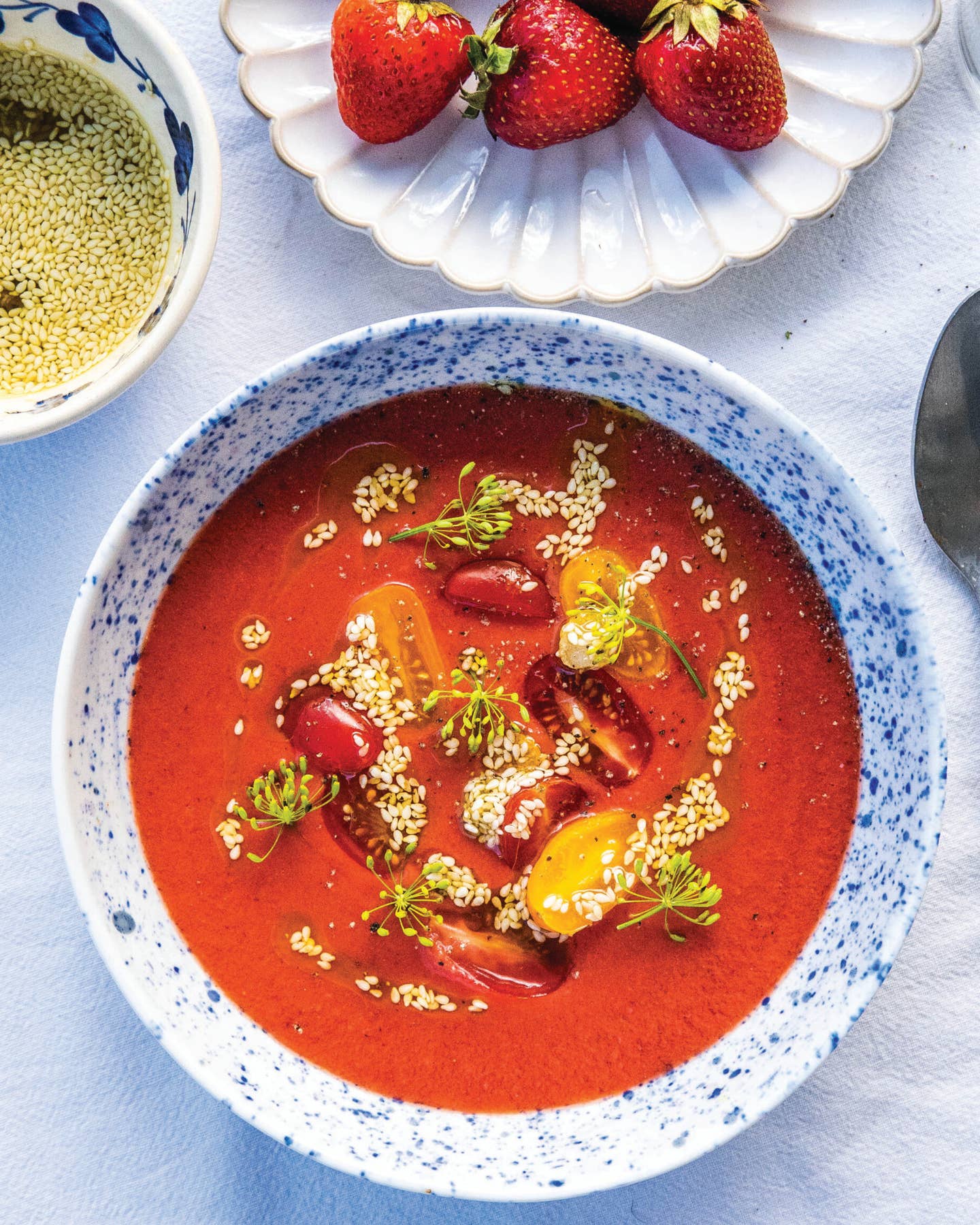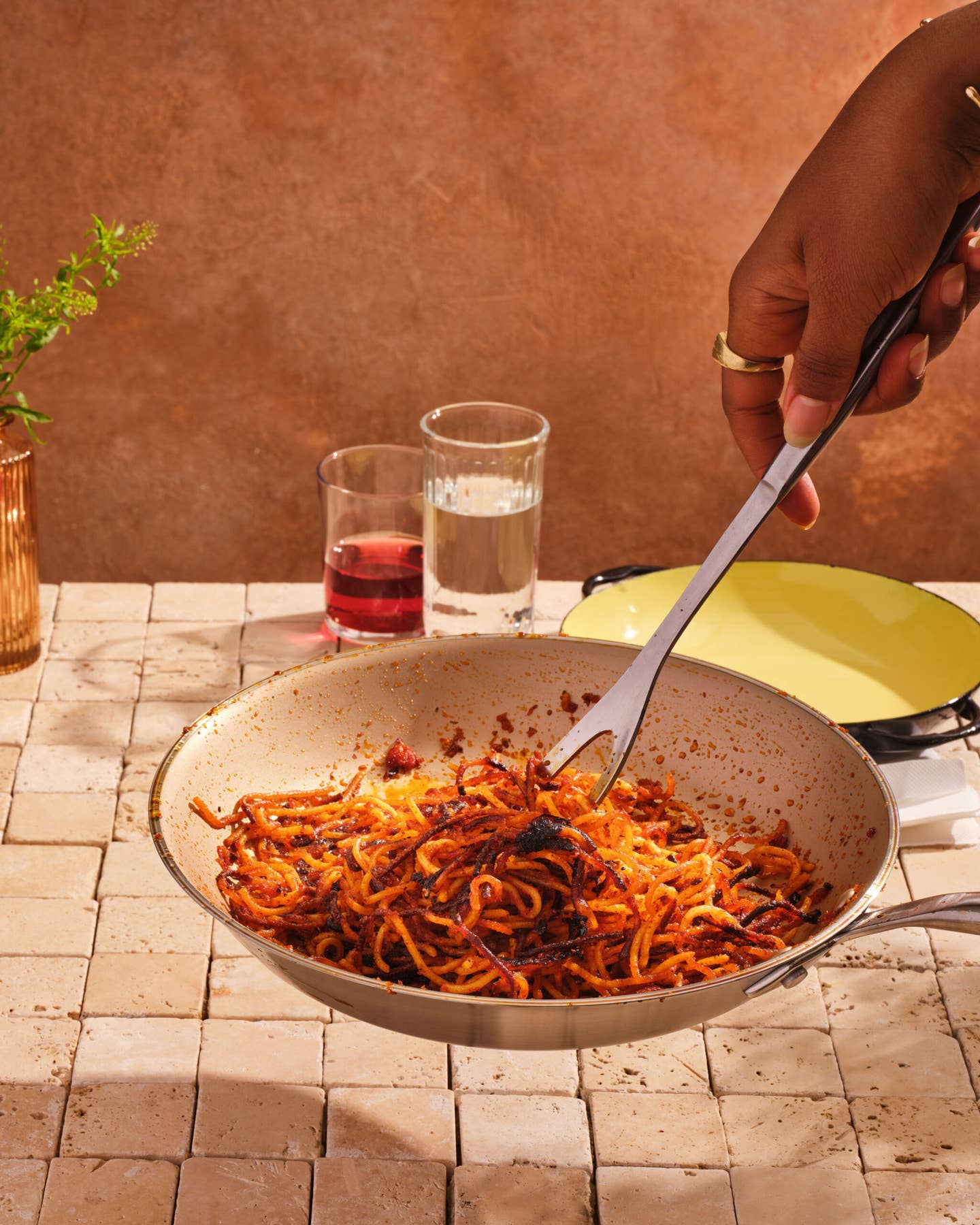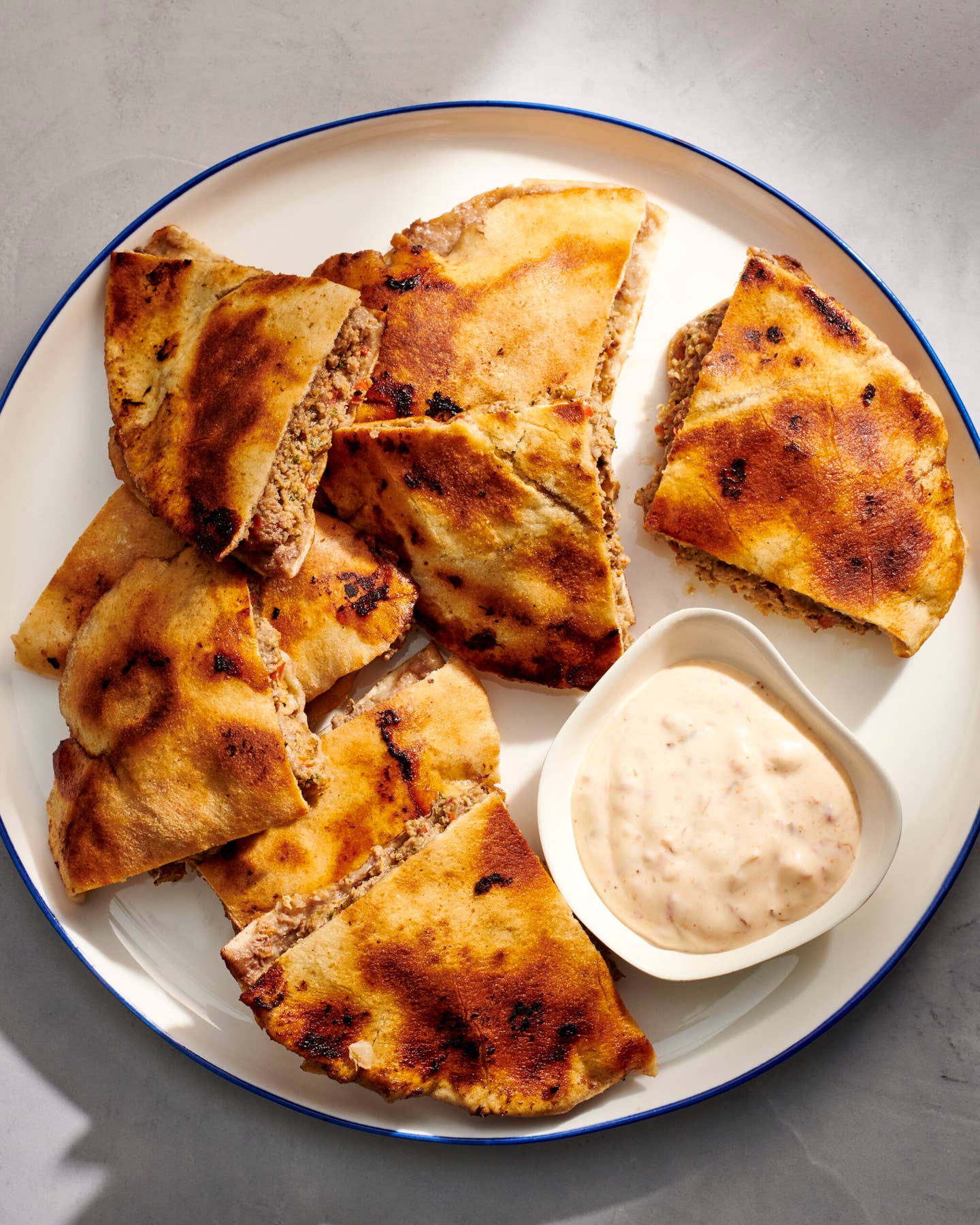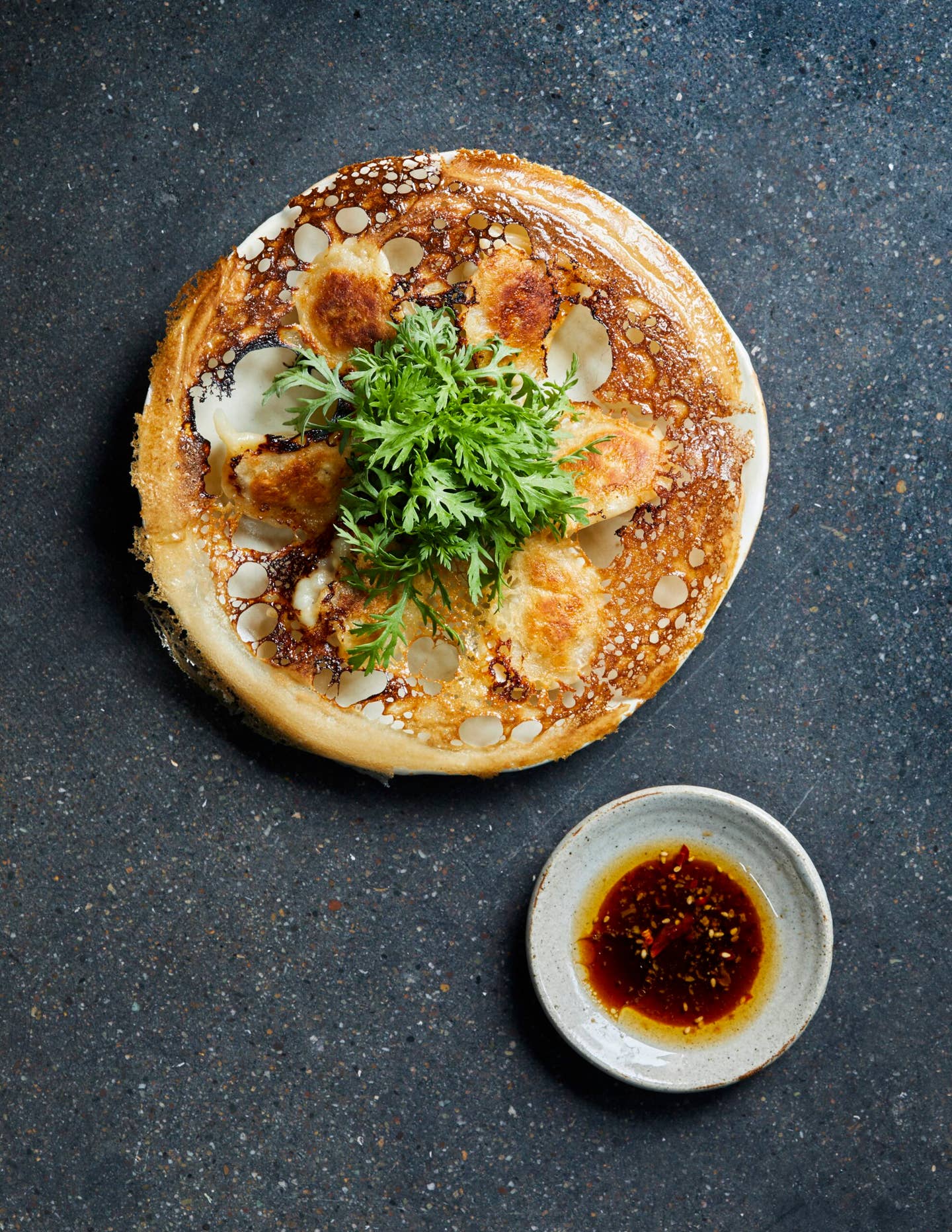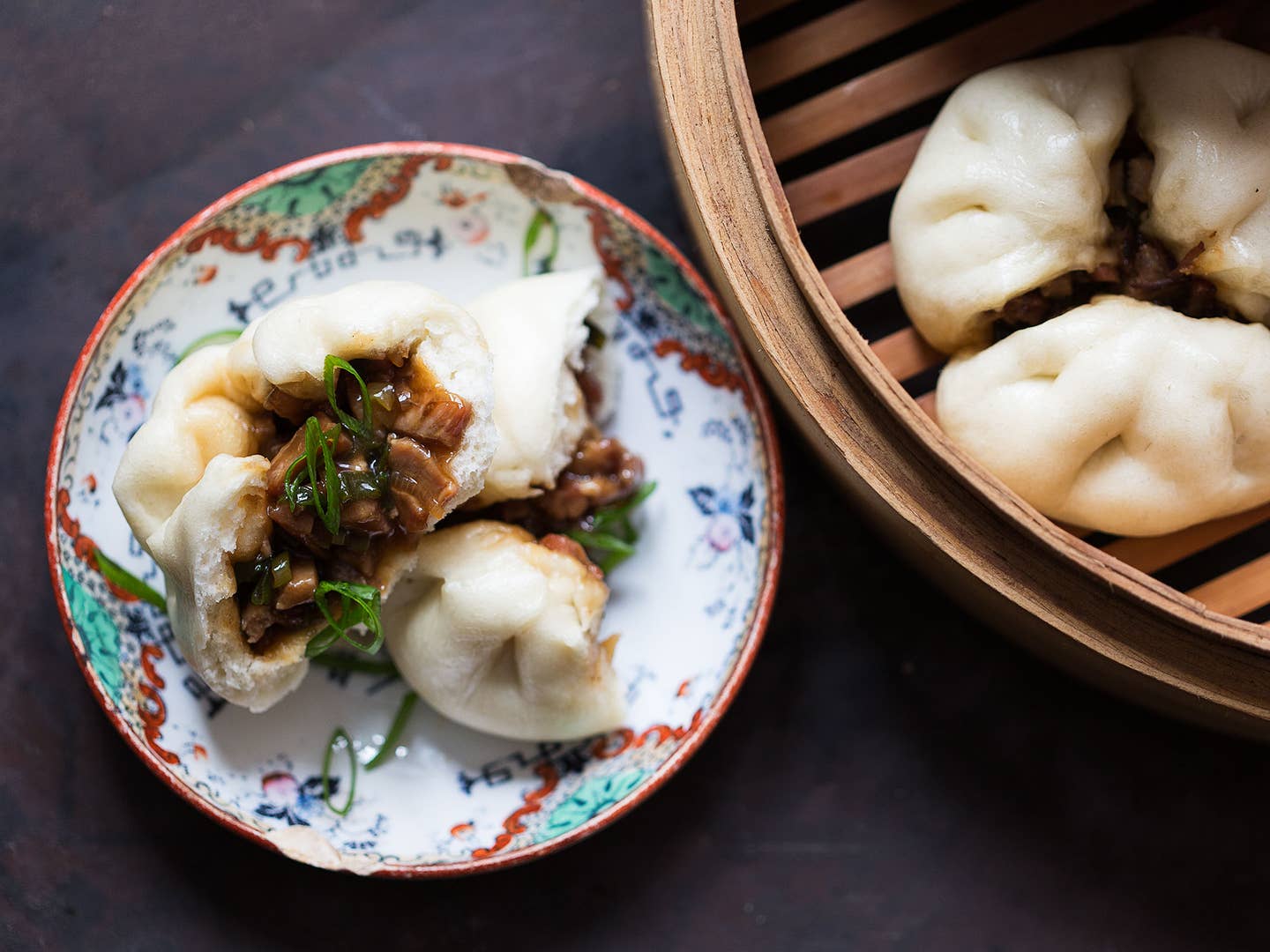
Cornstarch adds a silkiness to bao dough, mimicking the bleached, low-protein flour commonly used in Chinese bakeries (but harder to find in supermarkets). Lard adds tenderness, richness, and a subtle porky finish.
A lighter spin on steamed buns: crab with ginger and herbs
Ingredients
For the dough
- 1⁄2 tsp. active dry yeast
- 2 1⁄4 cups all-purpose flour (12 oz.)
- 3⁄4 cup cornstarch (4 oz.)
- 1⁄4 cup sugar
- 2 tsp. baking powder
- 3 tbsp. lard (1 3/4 oz.), well chilled
- Three 1/2-inch thick slices fresh ginger (about 1 oz.)
- 1 lemongrass stalk, tied into a knot if desired
For the filling
- 1 tbsp. canola oil
- 3 scallions, trimmed and thinly sliced
- 8 oz. boneless cooked pork (such as Chinese boneless barbecue spareribs or roast pork belly), diced (1 1/2 cups)
- 3 tbsp. soy sauce
- 3 tbsp. oyster sauce
- 1 tbsp. sugar
- 2 tsp. cornstarch
Instructions
Step 1
Make the dough: In the bowl of a stand mixer fitted with a dough hook, combine the yeast and 1 cup lukewarm water (about 90°F). Set aside until small bubbles begin to form, about 10 minutes.
Step 2
Meanwhile, in a medium bowl, sift the flour, cornstarch, sugar, and baking powder. Add the flour mixture and lard to the yeast mixture and mix on low speed until a shaggy dough forms, about 6 minutes. Increase the speed to medium-low and mix until smooth and elastic (8-10 minutes). (Dough will be quite firm and gummy.) Let rest at least 10 minutes.
Step 3
Cut a sheet of parchment paper into twelve 2-inch squares. Set aside.
Step 4
Make the filling: In a small bowl, dissolve the cornstarch in 3 tablespoons of cold water. Set the slurry aside.
Step 5
In a 10-inch nonstick skillet over medium-high heat, heat the oil until it shimmers. Add the scallions and cook, stirring, for 1 minute. Add the pork, soy and oyster sauces, and sugar, and cook, stirring occasionally, until the sauces are combined and the pork is heated through, about 3 minutes. Stir in the prepared slurry and cook until the sauce thickens, about 1 minute. Remove from the heat and let cool completely.
Step 6
Divide the dough into 12 even pieces (about 2 ounces each), then round and smooth each piece slightly on one side. Place one ball on a clean workstation and drape the remaining balls with plastic wrap. Starting with the smooth, rounded side facing down, roll the dough gently with a rolling-pin into a 3-inch circle. Use the edge of your hand to pound the outer edge of the circle slightly thinner than its center. Place 2 generous tablespoons of filling into the center, then fold the edges around the filling to cover and form a sphere. Pinch the edges closed tightly and evenly, being careful to avoid getting any sauce on the seam. Transfer the bao to a square of parchment paper, seam side up, and cover with more plastic wrap. Repeat with the remaining buns, filling, and parchment squares. Let the buns rest for 1 hour at room temperature before cooking (they will puff up a bit, but not double in size).
Step 7
When ready to steam, place 3 cups of water, ginger, and the lemongrass into a flat-bottomed wok or large, high-sided skillet. Place an 11-inch bamboo steamer into the wok (the water should not touch the bottom rack of the bamboo steamer) and bring the water to a rapid boil over high heat.
Step 8
Meanwhile, uncover half of the bao. Using kitchen shears, make 3 cuts in the knotted crown of the bao, each going out from the center (like a peace sign). Mist the buns lightly with a spray bottle of cold water, and transfer them to the steamer basket, leaving space between each. Quickly replace the lid and steam, adding more water to the wok as needed, until the buns are puffed up and no longer tacky, about 12 minutes.
Step 9
Remove to a platter or serving tray, and cover with a towel. Repeat with the remaining bao, adding more water to the wok as needed. Serve warm.
Keep Reading
Continue to Next Story
ADVERTISEMENTADAD





